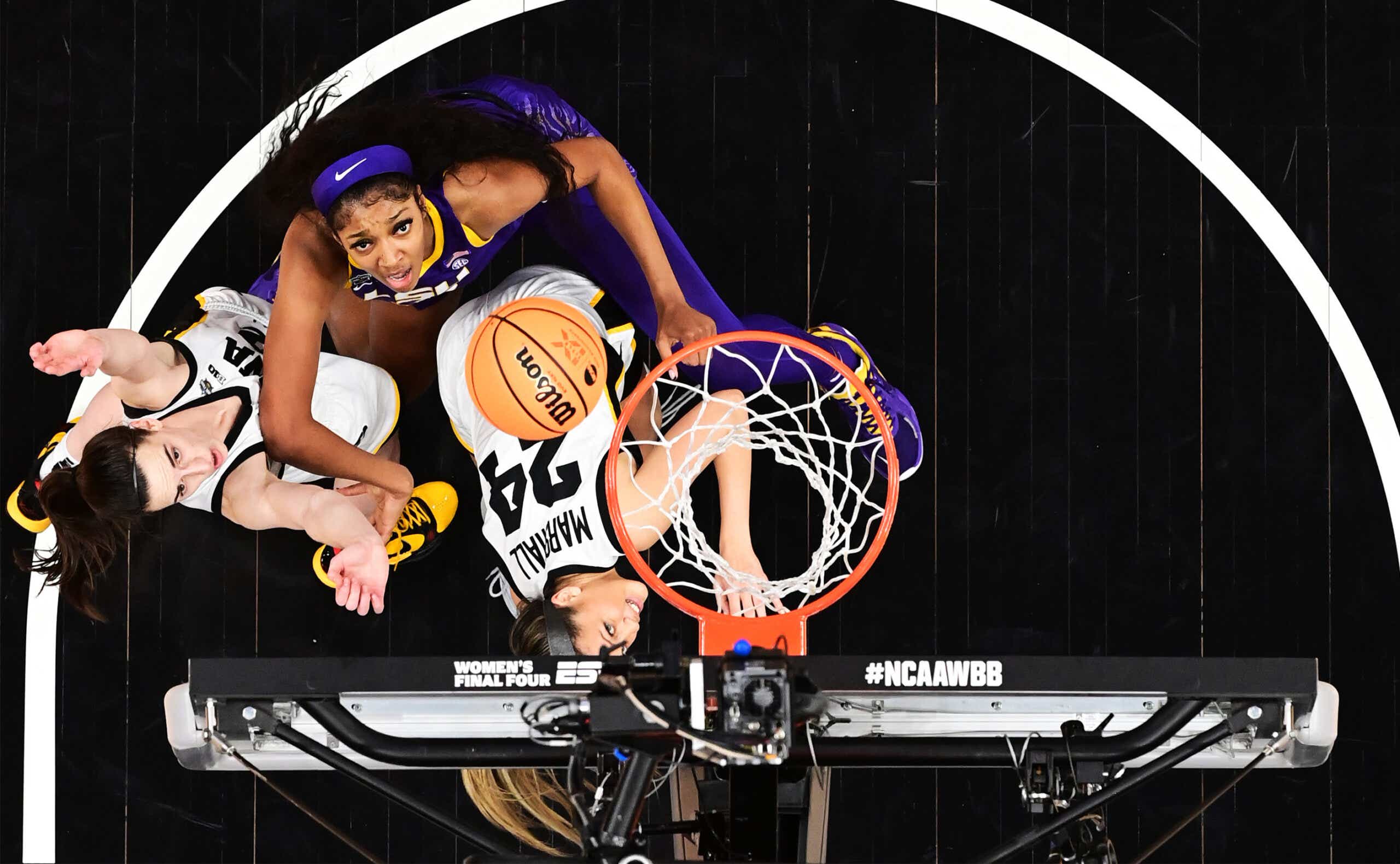Has the women’s game reached a turning point?
Yesterday, as I sat down to watch the LSU-Iowa game, something sort-of miraculous happened.
My boyfriend was on the couch next to me, gazing into the void which is his group chat — a text chain made up of a dozen guys whose sensibilities skew more Barstool Sports than Deadspin (RIP). They’re not your typical women’s sports fans, which is why I was struck by what was unfolding on my partner’s iPhone: earnest, highly engaged discourse about the NCAA women’s Elite Eight.
I mean, these dudes were dialed in. One guy was popping off about LSU’s inexplicable decision to keep “going under the screen” on Caitlin Clark, giving the best shooter in the tournament an absurd amount of space from behind the arc. Another was fanboy-ing over USC’s JuJu Watkins. Here were peak millennial men — who came up during a time when this rancid Family Guy bit was considered funny — far more interested in the women’s tournament than they were in the men’s.
It felt like a revelation.
Intellectually, I can grasp that more people really are watching the NWSL, the WNBA, and women’s college basketball; you can see it in the rising viewership and attendance numbers. But sometimes, it doesn’t feel like the culture reflects this. It’s hard to see progress when your friends can’t name a single WNBA player who wasn’t recently at the center of a massive geopolitical mess.
These past few years, as ratings have improved and women’s sports have finally been given the primetime slots they deserve, it feels like I’ve been holding my breath, waiting for this shift in the zeitgeist to happen. In my reporting, I’ve talked to authors and media experts, who are mostly pretty optimistic that women’s sports has slowly and steadily been building toward its “moment.”
But in the darkest corner of my heart, I was still skeptical about this country’s capacity to give a damn about female athletes. It’s not like we haven’t seen Caitlin Clarks before. Sure, she’s a generational talent, but so was Griner when she dominated at Baylor, or Cheryl Miller when she led USC to back-to-back national titles. So what sets this moment apart?
The answer became clear to me only recently. I was at the Barclays Center a couple weeks ago with some friends to watch Duke in the first round of the men’s tournament. We were high up in the nosebleeds when one friend, a diehard Syracuse basketball fan, turned to me and said there was only one player in all of college basketball right now he could even name: Caitlin Clark.
I chewed on that while we watched Duke — a roster with some very visible players with some very lucrative NIL (name, image, and likeness) deals — move onto the second round, and it made me think of a conversation I had last year with Mary Jo Kane, founder of the Tucker Center for Research on Girls & Women in Sport.
“Advertisers and corporate sponsors create superstars,” she says. “They build narratives around those names, those coaches, those grudge matches, and those winner-take-all moments.” Doing that — propelling players into the mainstream — takes gobs of money and time, Kane said.
After last year’s dramatic title game between LSU and Iowa, corporations seized on Clark and Angel Reese and started building them into brands themselves. Clark reportedly inked $3.1 million in NIL deals, including with Nike and Gatorade (making her the second highest-paid college basketball player behind Bronny James, LeBron’s son). Angel Reese is close behind, with $1.8 million for her partnerships with brands like McDonald’s and Coach.
These players’ massive talent was always going to draw viewers, but Kane is right: Advertising and the subsequent rise in their national profiles certainly generated some of the hype around this rematch. This week, their quarterfinal game drew 12.3 million viewers, the most in women’s college basketball history and the second highest for ESPN of any basketball game since 2012.
The showdown has generated more excitement and genuine buzz than anything that’s happened in the men’s tournament so far. For maybe the first time ever, the NCAA women’s tournament has household names, real star power that’s forcing America to sit up and watch.
That’s why this moment felt different — like something’s truly shifted within our cultural landscape. At least, I hope that’s the case.








